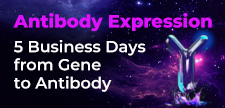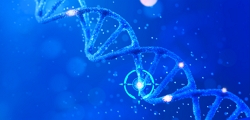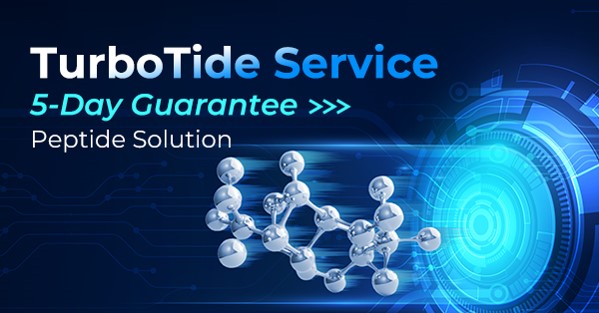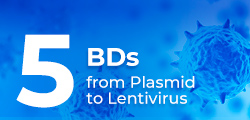-
REAGENT SERVICES
Hot!
-
Most Popular Services
-
Molecular Biology
-
Recombinant Antibody/Protein
-
Reagent Antibody
-
CRISPR Gene Editing
-
DNA Mutant Library
-
IVT RNA and LNP Formulations
-
Oligo Synthesis
-
Peptides
-
Cell Engineering
-
- Gene Synthesis FLASH Gene
- GenBrick™ Up to 200kb
- Gene Fragments Up to 3kb now
- Plasmid DNA Preparation Upgraded
- Cloning and Subcloning
- ORF cDNA Clones
- mRNA Plasmid Solutions New!
- Cell free mRNA Template New!
- AAV Plasmid Solutions New!
- Mutagenesis
- GenCircle™ Double-Stranded DNA New!
- GenSmart™ Online Tools
-
-
PRODUCTS
-
Most Popular Reagents
-
 Instruments
Instruments
-
Antibodies
-
ELISA Kits
-
Protein Electrophoresis and Blotting
-
Protein and Antibody Purification
-
Recombinant Proteins
-
Molecular Biology
-
Stable Cell Lines
-
Cell Isolation and Activation
-
 IVD Raw Materials
IVD Raw Materials
-
 Therapy Applications
Therapy Applications
-
Resources
-
- All Instruments
- Automated Protein and Antibody Purification SystemNew!
- Automated Plasmid MaxiprepHot!
- Automated Plasmid/Protein/Antibody Mini-scale Purification
- eBlot™ Protein Transfer System
- eStain™ Protein Staining System
- eZwest™ Lite Automated Western Blotting Device
- CytoSinct™ 1000 Cell Isolation Instrument
-
- Pharmacokinetics and Immunogenicity ELISA Kits
- Viral Titration QC ELISA Kits
- -- Lentivirus Titer p24 ELISA KitHot!
- -- MuLV Titer p30 ELISA KitNew!
- -- AAV2 and AAVX Titer Capsid ELISA Kits
- Residual Detection ELISA Kits
- -- T7 RNA Polymerase ELISA KitNew!
- -- BSA ELISA Kit, 2G
- -- Cas9 ELISA KitHot!
- -- Protein A ELISA KitHot!
- -- His tagged protein detection & purification
- dsRNA ELISA Kit
- Endonuclease ELISA Kit
- COVID-19 Detection cPass™ Technology Kits
-
- Automated Maxi-Plasmid PurificationHot!
- Automated Mini-Plasmid PurificationNew!
- PCR Reagents
- S.marcescens Nuclease Benz-Neburase™
- DNA Assembly GenBuilder™
- Cas9 / Cas12a / Cas13a Nucleases
- Base and Prime Editing Nucleases
- GMP Cas9 Nucleases
- CRISPR sgRNA Synthesis
- HDR Knock-in Template
- CRISPR Gene Editing Kits and Antibodies
-
![AmMag™ Quatro Automated Plasmid Purification]() AmMag™ Quatro automated plasmid purification
AmMag™ Quatro automated plasmid purification
-
![Anti-Camelid VHH]() MonoRab™ Anti-VHH Antibodies
MonoRab™ Anti-VHH Antibodies
-
![ELISA Kits]() ELISA Kits
ELISA Kits
-
![Precast Gels]() SurePAGE™ Precast Gels
SurePAGE™ Precast Gels
-
![Quatro ProAb Automated Protein and Antibody Purification System]() AmMag™ Quatro ProAb Automated Protein and Antibody Purification System
AmMag™ Quatro ProAb Automated Protein and Antibody Purification System
-
![Target Proteins]() Target Proteins
Target Proteins
-
![AmMag™ Quatro Automated Plasmid Purification]() AmMag™ Quatro automated plasmid purification
AmMag™ Quatro automated plasmid purification
-
![Stable Cell Lines]() Stable Cell Lines
Stable Cell Lines
-
![Cell Isolation and Activation]() Cell Isolation and Activation
Cell Isolation and Activation
-
 IVD Raw Materials
IVD Raw Materials
-
![Quick
Order]() Quick Order
Quick Order
-
![Quick
Order]() Quick Order
Quick Order
- APPLICATIONS
- RESOURCES
- ABOUT US
- SIGN IN My Account SIGN OUT
- REGISTER

Gene Synthesis & DNA Synthesis Services
Get Your Genes from the Top Gene Synthesis Provider 100% Sequence Accuracy Guaranteed
News & Blogs » Antibody News » Synthetic Genes at the Forefront of Antibody Drug Discovery (ADD)
Synthetic Genes at the Forefront of Antibody Drug Discovery (ADD)
Antibody-drug discovery (ADD) is an arduous process that often starts with the extensive screening of antibody libraries to identify optimal candidates, namely those having high-affinity antigen binding and other desirable functional properties. For example, during the COVID-19 pandemic, discovering potent neutralizing anti-SARS-CoV-2 antibodies has been prioritized. From the early stages of the pandemic, neutralizing antibodies were proposed to correlate with protection from infection (Addetia et al. 2020). Over time, more evidence upheld this view; thus, efforts to identify and characterize anti-SARS-CoV-2 neutralizing antibodies of potential clinical value continue to this date (Quiros-Roldan et al. 2021). While the now available SARS-CoV-2 vaccines represent the first line of defense for most people, monoclonal antibodies can serve as prophylactic or therapeutic bio drugs for a fraction of the population that remain unprotected due to comorbidities or inability to respond to vaccines.
The first FDA-approved monoclonal antibody drug for infectious diseases was granted back in 1998 to palivizumab to prevent lower respiratory tract complications following respiratory syncytial virus (RSV) infections in high-risk infants. Most recently, and during earlier stages of the COVID-19 pandemic, in 2020, the monoclonal antibody mixture Inmazeb (i.e., atoltivimab, maftivimab, and odesivimab-ebgn) received FDA approval for use in adult and pediatric patients to neutralize Ebola viral attachment and cell entry. Following up on the heels of these successful precedents, scientists have taken advantage of the rich diversity of patient-derived monoclonal antibodies to identify potential candidates for COVID-19 prevention or treatment.
Identifying Anti-SARS-CoV-2 Neutralizing Antibodies
Throughout the pandemic, scientists, such as those in Dr. David D. Ho’s team at Columbia University, have been busy evaluating neutralizing titers from SARS-CoV-2 infected patients (Liu et al. 2020). Peripheral-blood-derived B cells isolated from clinical study participants having high-neutralizing antibody titers enabled Dr. Ho’s team to identify several monoclonal antibodies with potential for clinical use.
The advantage of this strategy for antibody discovery lies in the direct access to an individual’s antibody repertoire, which may be rapidly obtained through VDJ mRNA sequencing at the single B cell level. However, significant challenges remain, such as the hurdles imposed by large numbers of antibody sequences that painstakingly need to be optimally synthesized and seamlessly cloned for monoclonal antibody production in support of functionality assays, lead optimization, preclinical studies, and towards potential clinical evaluation.
With sequences for over 200 antibodies at hand, Dr. Ho’s group expedited their “gene to antibody” workflow by relying on GenScript’s codon-optimized antibody gene synthesis, cloning, and plasmid preparation services. As a result, Dr. Ho’s team found that synthetic, codon-optimized, and cloned antibody sequences, efficiently expressed functional antibodies in transfected Expi293 cells. Additionally, antibody products successfully supported a battery of in vitro and in vivo assays, including antigen-binding and neutralization, epitope mapping, cryo-electron microscopy analysis, and protection from in vivo SARS-CoV-2 infection challenge studies in a preclinical model. Overall, this approach enabled the team to identify nine highly neutralizing antibodies with potential as drug candidates targeting the Spike protein at the receptor-binding domain (RBD), N-terminal domain (NTD), and quaternary Spike epitopes.

Anti-SARS-COV-2 Spike Monoclonal Antibodies “(B) Interaction between the S protein and the host cell receptor ACE2. Most therapeutic mAb target the RBD of the S protein at positions required for the interaction with ACE2 (Bamlanivimab, Etesevimab, Casirivimab, Imdevimab, Cilgavimab, Tixagevimab, Regdanvimab) while Sotrovimab targets the RBD, but does not compete with human ACE2 receptor binding. mAbs binding the NTD have been demonstrated to neutralize SARS-CoV-2, and these could be developed for therapeutic purposes (Created with BioRender.com).” Retrieved with modifications from Quiros-Roldan et al. 2021, creativecommons.org/licenses/by/4.0/
Expediting ADD for SARS-CoV-2 Variants
The SARS-CoV-2 pandemic has been an extremely dynamic process. The rapid accumulation of mutations has given rise to many SARS-CoV-2 variants, which have imposed different challenges to our vaccine or infection-derived immunity. Therefore, developing new variant-specific antibody drugs continues to be critical for treating and protecting susceptible individuals.
The Omicron variant (B.1.1.529), with its high transmissibility and many Spike protein mutations, raised concerns about the efficacy of pre-existing anti-SARS-CoV-2 monoclonal antibody drugs. Not surprisingly, Dr. Ho’s studies found the neutralizing potency of various monoclonal antibodies, including those authorized for clinical use (e.g., bamlanivimab, casirivimab, and imdevimab, among others) diminished or even abolished against the Omicron variant (Liu et al. 2021).
As we move into another phase of the global COVID-19 pandemic, with the continued evolution of Omicron sublineages, the need to expedite the discovery and development of new effective monoclonal antibody drugs remains (Iketani et al. 2022). Hence, strategies that accelerate gene to antibody product workflows in the ADD pipeline would enable greater agility in developing therapy solutions in response to the fast viral evolution.
Reference
- Addetia, A. et al. Neutralizing antibodies correlate with protection from SARS-CoV-2 in humans during a fishery vessel outbreak with a high attack rate. J. Clin. Microbiol. (2020) doi:10.1128/JCM.02107-20..
- Iketani, S. et al. Antibody evasion properties of SARS-CoV-2 Omicron sublineages. Nature (2022). https://doi.org/10.1038/s41586-022-04594-4.
- Liu, L. et al. Potent neutralizing antibodies against multiple epitopes on SARS-CoV-2 spike. Nature (2020) doi:10.1038/s41586-020-2571-7..
- Liu, L. et al. Striking antibody evasion manifested by the Omicron variant of SARS-CoV-2. Nature 602, 676–681 (2022). https://doi.org/10.1038/s41586-021-04388-0.
- Quiros-Roldan E. et al. Monoclonal Antibodies against SARS-CoV-2: Current Scenario and Future Perspectives. Pharmaceuticals. 2021; 14(12):1272. https://doi.org/10.3390/ph14121272.
Subscribe to Receive Updates
& Promotions From GenScript* We'll never share your email address with a third-party.
Latest News & Blogs
Find More Antibody News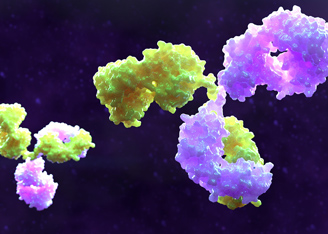
Identifying New Anti-PD-1 Monoclonal Antibody Drug Candidates
Nov 21, 2022
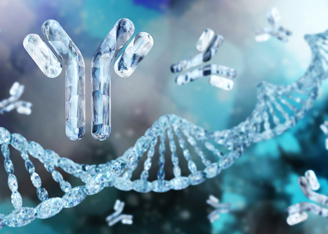
Synthetic Genes at the Forefront of Antibody Drug Discovery (ADD)
Apr 23, 2022

Therapeutic Antibodies Advancing Toward Approval for Clinical Use
Mar 27, 2022

Cerebral Organoids Provide a Platform to Screen Alzheimer’s Drugs
Oct 19, 2021

IL3 in Astrocyte and Microglia Communication: A Potential Therapeutic Target
Sep 05, 2021
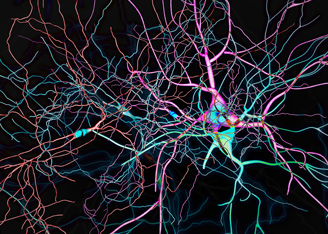
Understanding AMPylation and its Role in Neurons
Jun 28, 2021

-

